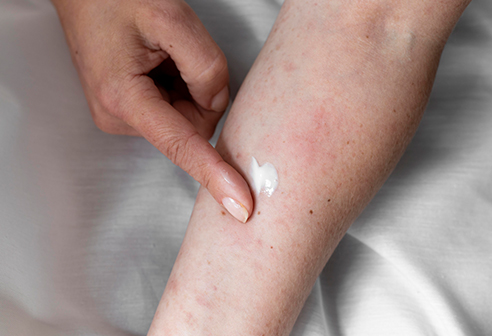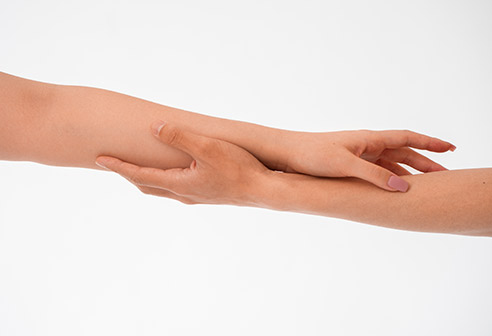
Human papillomaviruses, also called HPV, settle on the skin and cause an infection. This leads to the skin problem commonly known as a wart. Warts can appear anywhere on the human body and can spread to different areas. Warts can be transmitted through skin-to-skin contact, and also by sharing personal items such as towels, sheets, or clothes.
Warts can appear in different colors and sizes depending on the area of the body where they emerge. The primary cause of warts is the Human Papilloma Virus. Each person's immune system responds differently to this virus, which has many identified strains. Therefore, not everyone who comes into contact with the HPV virus may develop warts. Nevertheless, it should not be forgotten that warts are a health problem that can spread easily. Your Medical Aesthetic Doctor Lida Çiteli explained what you need to know about warts and wart treatment.
What is a Wart?
Warts are benign lesions that occur on the skin. These lesions, caused by the HPV virus, have many subtypes. Warts, which can spread through direct or indirect contact, can develop much more easily if the epithelial barriers of the skin's upper layer are damaged.
Although various difficulties are encountered in the treatment of warts, these types of lesions are generally expected to regress on their own within a few years. Some types of HPV infection, which has more than 100 subtypes, are extremely dangerous. Especially types 6, 18, 31, and 35 can lead to dangerous consequences, including cancer development. Warts that occur in the genital area, in particular, can turn into malignant formations. These types of warts are usually seen in individuals with immune system problems.
Why Do Warts Form?
The Human Papilloma Virus, which causes wart formation, leads to warts in a person as a result of skin contact. Damaged skin or sensitive tissues are much more vulnerable to the HPV virus. The risk of wart formation is higher in individuals with weakened immune systems, children, or diabetic patients compared to other people.
What Are the Types of Warts?
There are many different types of warts. Let's examine some of them individually:
Flat Wart Type
Flat warts can appear anywhere on the human body. These warts have a flat and small appearance. They are often found around the hair and face.
Verruca Vulgaris / Common Wart
These types of warts, especially appearing around the nails, on or inside the hands, between the fingers, and on the fingers, particularly favor areas where the skin's integrity is compromised. These warts are more commonly observed in children and frequently occur in people with nail-biting habits.
Genital Wart Type
The percentage of **genital warts** in adult men and women is extremely high. It is imperative that these warts, which form in and around the genital area, be treated. These warts, transmitted during sexual intercourse, can lead to dangerous consequences if left untreated.
Plantar Wart Type
These types of warts can appear individually or in groups. Formed embedded within the skin, these warts resemble calluses when viewed from the outside. Warts on the feet, which bear the body's entire weight, do not become raised. However, they can cause pain.
What Are the Symptoms of Warts?
Wart symptoms can vary depending on the type of wart. However, the raised condition that begins to form on the skin is one of the most important findings of a wart problem. These bumps can be in brown tones or the skin's natural color. They can also occur in different sizes. Plantar warts may not appear as bumps due to pressure. However, they manifest as a hard, painful layer resembling a callus.
The symptoms of **genital warts**, one of the most common types, are very subtle in the initial stage. Additionally, they may appear as small, raised flesh-colored pieces. Genital warts, which are initially unnoticed or disregarded by patients, multiply rapidly and become noticeable within a very short period of time.
Genital warts observed in women appear in the anal, vulva, and vaginal areas. If their examination and treatment are neglected, these warts can completely cover the genital area. In some cases, large genital condyloma, which resemble cauliflower when viewed from the outside, may form. Bleeding can occur in these structures. However, since awareness of genital warts has increased today, symptoms are generally recognized, and action is taken for treatment at the right time. This provides great benefit for public health.
What Are Wart Treatment Methods?
It is a proven fact that some subtypes of the HPV virus, which causes warts, are closely related to cancer formation. Similarly, some types of this virus cause genital warts in people with weakened immune systems. Benign warts can turn malignant over time. So, how are warts treated?
On average, two out of three warts tend to regress and heal on their own after a period of about two years. Therefore, doctors may decide to monitor the course of some warts without intervention, instead of applying specific treatments. These monitored warts rarely show signs of spreading or growing. Even if they don't cause any negative consequences, it's possible to get rid of warts with medical aesthetic methods for individuals who are aesthetically bothered by their appearance.
Prescription medications used topically can be utilized for wart treatment. Similarly, doctors may prefer medications containing salicylic acid for the treatment of some warts. These drug applications generally provide healing in more than half of warts.
Besides medication applications, solutions such as **wart freezing treatments** and applying a cold and concentrated mixture of propane and dimethyl ether gases to the wart are also available. With these treatments, that part of the skin loses its vitality. This facilitates the removal of warts from the area. Doctors can also use liquid nitrogen in wart treatment. If all these treatment methods prove insufficient to remove warts, individuals can also be rid of warts through surgical interventions.
Does Wart Treatment Hurt?
One of the most commonly used methods in wart treatment is **electrocauterization**, also known as burning treatment. This treatment method allows warts to be treated quickly and without bleeding in a single session. However, since it is a painful treatment application, it must be performed under local or general anesthesia. Therefore, it should be noted that burning treatment is more painful compared to other wart treatments.
What Should Be Considered After Wart Treatment?
What needs to be done and paid attention to after wart treatment varies depending on the treatment method applied. However, in every treatment, ensuring the hygiene of the treated area is of great importance. This is crucial for preventing warts from blistering and achieving quick results from the treatment.
How Long Does Wart Treatment Take?
The duration of wart treatment can vary depending on the type and size of the lesion. Treatment sessions can usually be completed within five to twenty minutes. In addition, full cure is shaped according to the patients' wart structure, the depth of the wart, and the patient's immunity level. Sometimes a single session of treatment may be sufficient, while sometimes four or five sessions may be needed.
What Should Be Done to Prevent Warts and Their Spread?
There are some precautions that can be taken against wart infections. The HPV virus, which causes warts, generally develops as a result of direct or indirect contact with an infected person. You can take precautions against warts with the measures listed below:
- Avoid touching warts. Do not scratch warts and do not touch people with warts. If you accidentally touch them, wash your hands immediately.
- Keep your feet consistently dry and clean. Especially after outdoor activities and swimming, dry your feet thoroughly. In addition, stay away from slippers, bathrooms, or towels that have been in contact with others' feet.
- Do not walk barefoot in places like gyms, toilets, or swimming pools.
- Take necessary hygienic precautions during sexual contact. Avoid unprotected sexual encounters.
- Strengthen your immune system against the HPV virus. Regular exercise, a healthy diet and sleep routine, along with reducing stress factors in daily life, also contribute to your immune system.
Do you have any further questions about specific wart types or treatment options?



